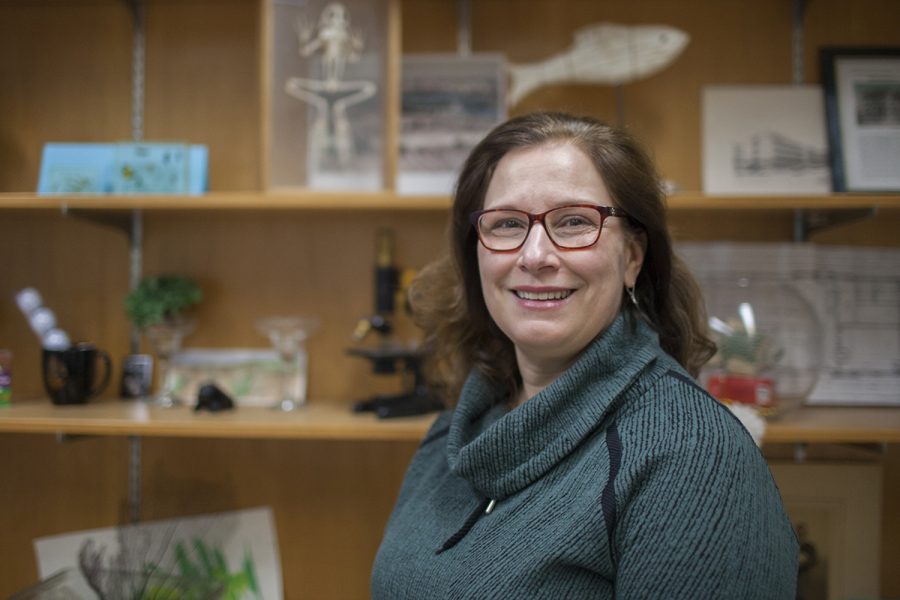Team co-led by UI biologists discover gene key to human hearing
UI Professor Bernd Fritzsch and a team of biologists from Czechia have discovered a new gene critical to human and animal hearing as well as frequency mapping. The gene is called Nuerod1 and is a key development in the study of the cochlea and auditory system.
Chair of the University of Iowa Department of Biology, Diane C. Slusarski poses for a portrait on Monday, February 11th, 2018.
February 12, 2019
A team of biologists co-led by the University of Iowa have found a gene critical to hearing and the auditory system in humans and animals.
Researchers from the UI Biology Department and Czechia have worked together on a research into the auditory system and the significance of the gene Neurod1. The study, conducted on mice, found that Neurod1 is essential in the development of the auditory system and neural components in the cochlea.
This study and its findings were published in the Journal of Neuroscience.
RELATED: UI study makes strides in coma treatment research
UI Professor Bernd Fritzsch, the director of the Center on Aging and the Aging Mind and Brain Initiative, was in charge of writing the paper with a colleague from Czechia, Gabriela Pavlinkova.
“The design is typically done by Gabriela Pavlinkova and me,” he said. “We discuss exactly what we want to do and how we want to do it … what are the expectations and who is doing what for the entire paper and the research.”
Fritzsch and Pavlinkova have been working on the development of this study since the study began in 2001 and the first research paper was drafted. Research also led to another paper published in 2010 that focused on conditional deletion, Fritzsch said.
UI biology Professor Steven Green, who studies and researches auditory neuroscience, read the findings of the paper.
Green said the most recent paper focused on the development of the cochlea, a cavity in the inner ear that houses the organ that produces nerve impulses from sound vibration, without the presence of Neurod1. He said that the research conducted on mice in Prague indicated that there were significant effects on the mice without the presence of Neurod1 in the cochlea.
“What they were able to show was that the ‘so called’ tonotopic organization was totally messed up … the tonotopic pattern was completely distorted,” he said.
Tonotopic organization can be defined as localizing sounds in your brain, Fritzsch said. He said comparing exactly the same sounds from your left to right ear develops a frequency analysis defined as tonotopic organization.
Green said that these findings and the significance of Neurod1, in relation to tonotopic analysis, is a key step in the ongoing research process of the auditory system.
“It provides an important clue that Neurod1 is a gene that is essential for that tonotopic organization,” Green said.
Fritzsch said he developed tonotopic maps that represented Neurod1’s effect on the cochlea. He said the cochlea and ear depend on frequency representation in how neurons interact with the brain.
“The ear develops independent, to a certain extent, of the brain, and the neurons that are coming out of the ear need to be connected to the brain in a specific way so that you can get detailed information,” he said.
UI Biology Executive Officer Diane Slusarski, who is in charge of funding and grants related to research such as Fritzsch’s Neurod1 study, said this sort of research is critical to the “excellence of education” offered to UI biology students.
“We have [many] undergraduate majors, and about 60 percent of them do research in an externally funded lab,” she said. “So it’s critical because we bring it directly into the classroom, and so the students are hearing about these things before they ever make it into a textbook.”



